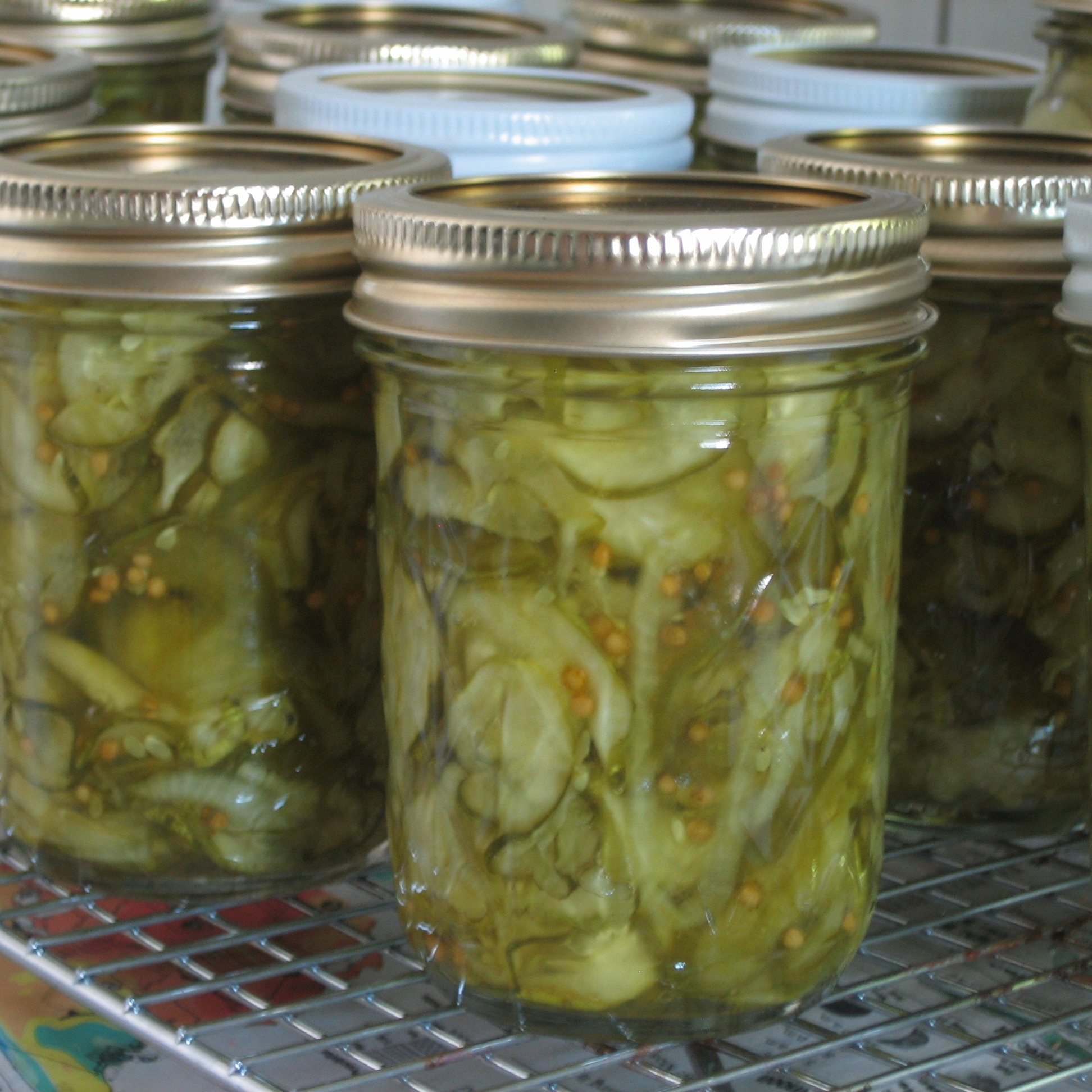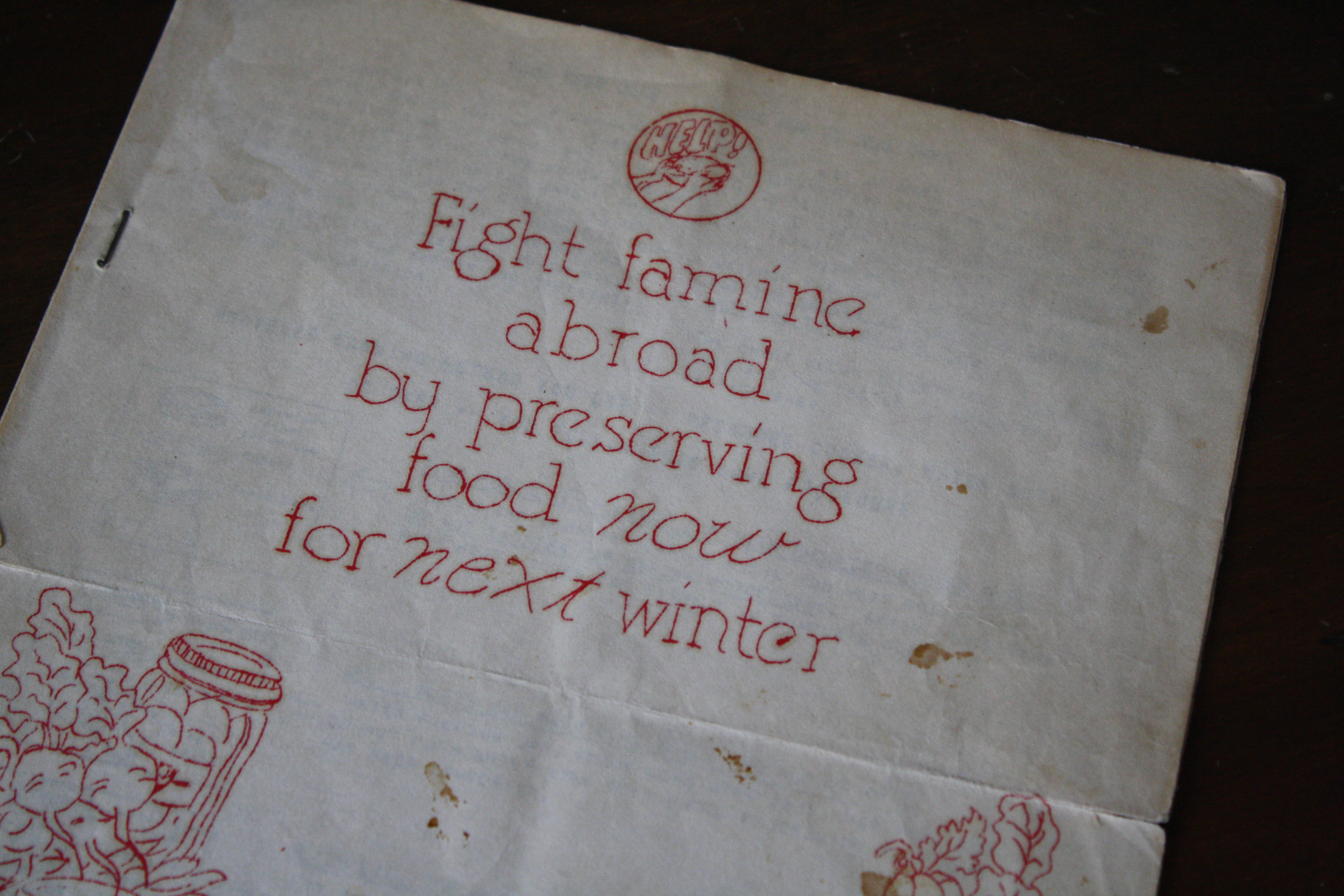Good, old fashioned preserving


Bread & butter pickles: the recipe that started it all.
I think I know why pregnant ladies crave pickles. It’s because pickles are awesome. And there are so many different kinds, you could probably eat a different one every day for a full nine months.
I took up pickling eight summers ago when my Grandma Blanchie, who is in her 90s, announced firmly that she was through with it. And because I very vocally decided I wasn’t through eating her tart-sweet bread & butter pickles, which were part of many Sunday dinners for my whole life, I was sent down to the cellar to gather up her big aluminum canning pot and rows of mason jars and take them to my tiny first apartment to make the pickles myself. I was just out of college and convinced that nothing was impossible, so I went for it with the help of a 1940s government-distributed pamphlet urging people to can their victory garden harvest (and several phone calls to grandma).

Grandma’s wartime pamphlet about canning produce.
That first successful session got me hooked. Next I tried canning her recipe for sweet, juicy peaches in light syrup, then applesauce, then tomatoes. I made such a disaster in my kitchen with the tomatoes’ juice that I vowed never to do them again, but after I tasted a jar and found summery, bursting tomato without the commercially canned taste, I begrudgingly do them every year. Now I’ll can anything that sits still long enough – the every-popular dilly beans, spring ramps and fiddleheads, tart blueberry jams and rhubarb sauce, gingered carrots, spicy pepper relish, slices of jalapenos that were too damn hot to eat fresh, tomatillo salsa, and whatever else I can invent with what’s available.
Canning, of course, started as a way to preserve the harvest for use during colder months, when a zillion types of produce didn’t magically appear on supermarket shelves. Back then, if someone in Vermont was eating a blueberry in January, it’s because they dried, froze, or canned it in July. While we don’t have to hang braids of garlic to dry from beams in our cellars, hull and wash flats of strawberries for the freezer, or invite the neighbor women over for a long day of kibitzing and “putting up” vegetables in a small, steamy kitchen, maybe we should keep those traditions going strong. Doing things the way they’ve always been done gives us a very real connection to our past, allowing us to pay homage to the seasonal diligence it took to make sure families had enough to eat through the winter not that long ago. And there’s something so prideful and satisfying about knowing your shelves and freezer are full of locally grown produce picked and preserved at the peak of flavor and nutrition – and that you put it all there yourself.
If the whole process scares the living daylights out of you, ask a friend or elder to show you how to do it, or sign yourself up for any number of canning workshops that are increasingly being offered by local farms, churches, co-ops, and food organizations.
I still bring dozens of jarred goodies home to my family each time I go, including Grandma Blanchie’s own personal stash of bread & butter pickles made the exact same way she did them. Given how quickly I get her empty jars back, it turns out she wasn’t through eating those pickles, either.
